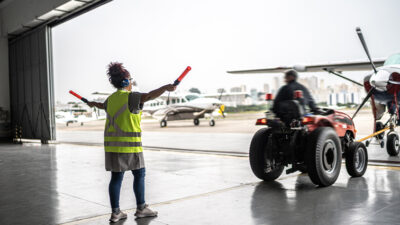Empirical Safety Data Finally Emerges Regarding Masks and Face Coverings. It May Not Be What You Expected.

More than six months have now passed since the novel coronavirus (COVID-19) became an international household word. Paradoxically, only until recently has any demonstrable evidence surfaced to evaluate the recommendations coming from the health community. If you missed it, you can’t really be blamed. The data hasn’t entered the mainstream communications as of yet. Fortunately, the news is generally encouraging, for those who take precautions seriously.
Unfortunately, there is now almost universal frustration with the changing guidance, reversals on recommendations and confusing instructions. Meanwhile, the medical community still points to the Centers for Disease Control and Prevention (CDC) as the source of truth. Medical service providers, health institutions and even our state and municipal health organizations communicate in very safe spaces, again pointing to the CDC as our primary compass point.
The problem is at least twofold. After weeks of recommending all people get tested, just this week, the CDC issued yet another reversal on recommendations regarding COVID-19 testing. If this is the agency that is to be our North Star, and all other medical entities are simply a reference pass-through to the CDC, the growing frustration is easy to understand. What is not so easy to understand is pandemics, and human-to-human transmissible diseases, are nothing new. As a global community, we were talking about masks and face coverings over 15 years ago (circa 2003) in response to Severe Acute Respiratory Syndrome (SARS). Why did we not remember that we had been here before? Back then we communicated clearly and studied the same issues… and we won.
The other problem affects business aviation operations directly. We are an industry that survives (often quite literally) on certainty, clarity, precision and predictability. As it relates to pandemic preparedness and response, we are owed more than what we have been getting. Is it then entirely incumbent upon us to derive our own logical, responsible and defensible practices? Maybe not, thanks to the academic community who have demonstrated the bravery and fortitude to work toward scientifically based data upon which we all can establish our risk tolerance thresholds.
New Data From Duke
A team at Duke University1 recently published essential findings on the efficacy of masks and face coverings. Most notably published in the online ScienceAdvances periodical, their study examines the transmission of moisture droplets and the relative effectiveness of different types of facemasks and face coverings. As noted in their research, “It is assumed that wearing such masks reduces the likelihood for an infected person to spread the disease, but many of these mask designs have not been tested in practice.”
The Duke University team’s research summary is, at the very least, a worthwhile read for anyone engaged in safety practices. Spoiler alert: A quick overview of the data validates what many of us in the safety and emergency response world already knew. The further you move away from safety-rated PPE equipment, the more risk is assumed by both the wearer, and those in their immediate proximity. Some face coverings, due to their poor fit and fabric weave construction, appear to be worse than wearing no mask at all.
There is another relevant body of work that recently emerged, thanks to an employee of the National Institute of Standards and Technology (NIST). While working from home, he used a photographic technique known as Schlieren Imaging,2 which essentially uses a reflective surface and focused light. This technique enables the visual assessment of direction, speed, and relative volume of moving air streams (breath, in this case) as the moving air can now be photographed and video recorded.
We know that COVID-19, again like most other transmissible diseases, is most easily spread by mouth through talking, coughing, sneezing and other physiological activities. Science-based media, like the popular and aptly named “It’s Okay To Be Smart” on PBS, demonstrates both the general value of wearing face coverings, but more importantly the critical elements of both proper fit and material construction.
Fireside Partners Joins the Search for Answers
With empirical results in hand, Fireside Partners has entered the next level of mask and face-covering testing. Using our in-house laboratory and studio, we are working towards photographic and visual measurements on droplet transmission in confined spaces. We will see what the science tells us, so stay tuned to your Global Aerospace SM4 Program for continual updates. We are also incorporating this and other COVID-19 safety procedures into our “Going Viral™” video series, a compilation of topics related to in-flight and trip-related pandemic scenarios.
At the functional business aviation level, a Pandemic Operations Plan (POP) which sets forth the day-to-day strategy, and a pandemic or contagion guide inside your Emergency Response Plan (ERP), are both vital tools. The latter sets forth the executable actions depending upon what type of scenario you are confronting.
Whereas aviation accidents and incidents are rare events, a pandemic is a clear and present threat. Responsibility and defensibility compel us to integrate these two items into our processes now, if we haven’t already.
A sincere thank you to the team (Fischer, et al) at Duke University for bravely stepping forward at a time where we all need facts, science and clarity upon which to base our safety programs and emergency procedures. We will pitch in to do our part, and further contribute to the scientific fund of knowledge regarding pandemics.
Resources
1 Department of Psychology & Neuroscience, Duke University, Durham, NC 27708, USA.
2 Hargather, Michael John; Settles, Gary S. (9 July 2009). “Natural-background-oriented schlieren imaging”. Experiments in Fluids.
 Fireside Partners Inc.
Fireside Partners Inc.Fireside Partners, Inc., is a fully integrated emergency services provider designed to provide all services and resources required to respond effectively and compassionately in a crisis situation. Dedicated to building world-class emergency response programs (ERP), Fireside instills confidence, resiliency and readiness for high-net worth and high-visibility individuals and businesses. Fireside provides a broad array of services focused on prevention and on-site support to help customers protect their most important assets: their people and their good name.
http://www.firesideteam.com/
© 2024 Fireside Partners Inc.. All Rights Reserved.
Next ArticleRelated Posts

More Than a Box Tick: Achieving Operational Flexibility With an FRMS
Moms know best. This adage holds true in many domains of family life—allergies, grades, crushes. When thinking about aviation safety, though, perhaps the best illustration drawn from mom’s expertise is…

The Effects of a Learning Mindset on Safety Culture
As aviation departments strive to enhance their safety performance, a critical yet often overlooked element is the need to foster a learning-culture mindset. This mindset shift can unlock invaluable opportunities for continuous improvement, employee engagement and creating a resilient safety environment. From a behavioral management perspective, as your company’s learning culture goes, so goes the ongoing success of your SMS.

